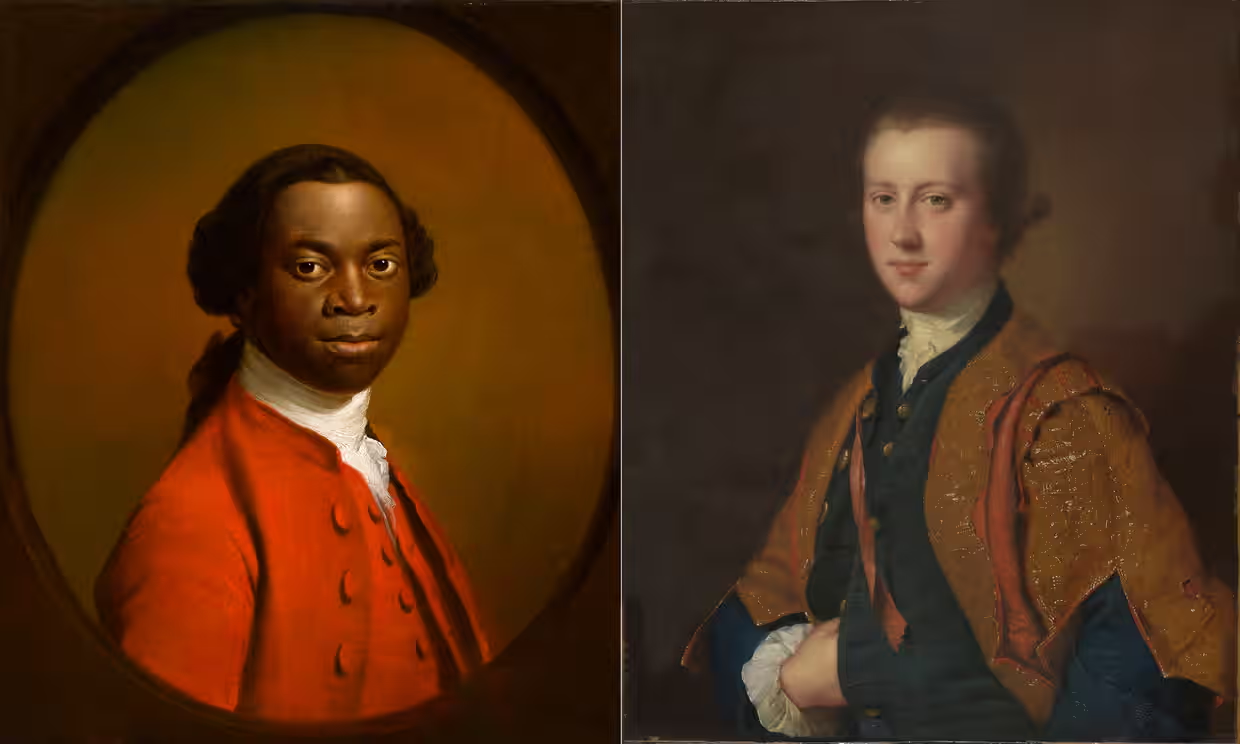The Observer
Black Atlantic, The Fitzwilliam Museum


“The Black Atlantic can be defined, on one level, through the desire to transcend both the structures of the nation state, and the constraints of ethnicity and national particularity,” writes Paul Gilroy in The Black Atlantic, his seminal 1993 text. Gilroy theorises that the modern black experience, shaped by enslaved people and their descendants, surpassed any one land to form its own hybrid nation consisting of shared African diasporic cultures.
The book’s title inspires a new exhibition at the Fitzwilliam Museum in Cambridge that seeks to grapple with the museum’s connections to the transatlantic slave trade. In 1816, Richard Fitzwilliam donated vast sums of money, literature and art to the University of Cambridge, which gave birth to the museum. The donations were made possible by the huge wealth of his grandfather Sir Matthew Decker, a Dutch-born English merchant who helped establish the South Sea Company in 1711, which was responsible for the trafficking of enslaved African people. The Fitzwilliam brings together collections from across the University of Cambridge and other institutions, as well as 21st-century artworks that ask the question: whose stories get told?
Portrait of a Man in a Red Suit opens the show. The painting was once thought to depict either Olaudah Equiano or Ignatius Sancho (both of whom were 18th-century black African writers and abolitionists), but the true identity of the man is unknown. The portrait sits opposite another of a then 19-year-old Fitzwilliam, by Joseph Wright of Derby; Fitzwilliam beams in a gold gown worn for his Cambridge graduation. The juxtaposition between the two portraits, the chasm between the recorded and the unrecorded, sets the tone for what lies ahead.
Fitzwilliam inherited Decker’s art collection, which consisted of many Dutch works that became integral to the museum’s founding bequest. In 1720, motivated by his fascination with botany, Decker commissioned a painting by the Dutch artist Theodorus Netscher. It depicts a pineapple cultivated by Decker, which he claimed was the first in England. The fruit sits lucid and bright, though an air of melancholy presides. It’s partly the backdrop of a dark and gloomy sky, but it’s also the fact that the pineapple is presented with more dignity and nobility than some of the other Dutch works on display, such as the voyeuristic The Slave-Dance (1706–08) by Dirk Valkenburg, which shows enslaved people drumming and dancing, their oiled bodies glistening.
Work by the British artist Barbara Walker (b.1964), which seeks to redress the misrepresentations of the black figure, is a triumph of the show. Vanishing Point 29 (Duyster) (2021), based on a 17th-century Dutch painting, is a detailed graphite drawing of a black man sitting in the middle of a wealthy family. The family’s outlines are embossed, so they’re near invisible from afar. It’s a bold mediation on erasure, emphasising the black attendant while obscuring the white family. Jamaican artist Jacqueline Bishop (b.1971) puts on display an 18-plate dinner set. In the plates’ centres are scenes of plantation and colonial violence crowded in beautiful bright flora. The work quietly speaks to the ways imperialism is decorated and embellished to obscure its brutality.
Sometimes, the exhibition’s ambition makes it reductionist. It introduces too many segments, from fashion and consumption to the technology that propelled the slave trade, to the cultural contribution of Indigenous people. The space is relatively small and so these significant findings get shrunken down into palatable, bite-size chunks. Should a conversation about the ways in which the slave trade helped to found the museum really be happening at the same time as a conversation on the racist portrayals of the black figure? These histories have so long been omitted, and given how long it’s taken the museum to even acknowledge them, it feels as though they should be separated, given more air and looked at individually, rather than stuffed together because they derive from the same gnarly root.
A good example of the show getting it right is when it gets meta, as with the display of the De Catharina plantation bell. This instrument of brutality, signifying the start and end of the working day for enslaved people in Guyana, lies toppled on the museum floor. So large, it astounds. In the 1950s, a former student of St Catharine’s College, Cambridge, found and sent the bell to the college. It was displayed at the front entrance until recent years, and according to the exhibition catalogue was even rung by the college, which was “aware of but, until recently, for the most part indifferent to its provenance and original purpose”.
Still, the show too quickly jumps to moments of resistance, and looks to “the future”, rushing through its own past and present as a beneficiary of the empire to explore more generally the aesthetics and artefacts related to the slave trade. It isn’t depictions of brutality that are missing here, but more declassification, more storytelling and more exposition on how blood money and power shaped the legacy of the very building where these works hang. Ultimately, the museum doesn’t entangle itself enough. This welcome show isn’t ugly enough.